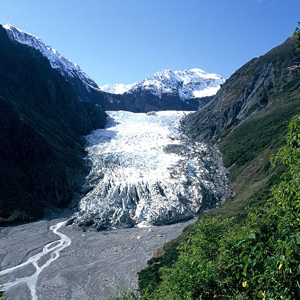Mountain melt measured
 New studies suggest that even if the world meets the Paris climate goals, it will lose a tenth of its mountain glacier ice.
New studies suggest that even if the world meets the Paris climate goals, it will lose a tenth of its mountain glacier ice.
A team of 80 researchers has investigated the contribution of land ice to the 21st century sea level rise.
To determine the future mass losses of mountain glaciers, the work of ten international research groups using a total of eleven different models has been brought together.
The research predicts that if the world can limit global warming to 1.5°C (the goal of the Paris climate agreement), Greenland ice sheet losses would reduce by 70 per cent and glacier losses by half.
Meanwhile, mountain glacier ice will have melted over 13,200 cubic kilometres of water, leading to knock-on effects on highly populated river deltas, wildlife habitats and sea levels.
A prerequisite would be that global warming is stopped at 1.5°C and not, as other possible scenarios suggest, at two or more degrees Celsius.
The paper suggests the extra runoff will add 79-159 mm to sea levels by 2100.
The results are being used to contribute to the Intergovernmental Panel on Climate Change's Sixth Assessment Report, which will be published later this year.
“Ahead of COP26 this November, many nations are updating their pledges to reduce greenhouse gas emissions under the Paris Agreement,” says lead author Dr Tamsin Edwards from King’s College London.
“The global sea level will continue to rise, even if we halt all emissions now, but our research suggests we could limit the damage.
“If pledges were far more ambitious, central predictions for sea level rise from melting ice would be reduced from 25 cm to 13 cm in 2100, with a 95 per cent chance of being less than 28 cm rather than the current upper end of 40 cm. This would mean a less severe increase in coastal flooding.”







 Print
Print